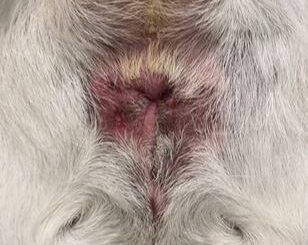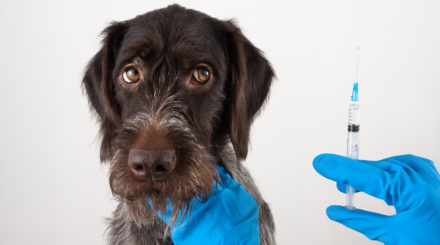A conversation with Cat the Vet: What’s new in chronic Kidney Disease?
Join our director and Internal Medicine Specialist, Scott Kilpatrick, as he discusses chronic kidney disease (CKD) in feline patients. In this FREE webinar hosted by Hills Pet UK & Ireland,…
Anaesthetizing the very young and very old – Paediatric and geriatric anaesthetic considerations
Anaesthesia is never a one-size-fits-all approach, and age is one of the most important factors influencing safety and outcomes. This webinar explores the unique physiological and pharmacological differences between paediatric…
Anal sac disease – A dermatologist’s perspective
‘Express anal sacs’ are a common consult in practice but why is this happening in the first instance and what can we do about managing our patients? Join us on…
Appropriate use of antimicrobials in small animal practice
Antibiotics can be a key component in any veterinary treatment plan, and that is not going to change. To ensure that we have a range of antibiotics to treat bacterial…
Beyond Bald: Diagnosing and Managing Canine Alopecia
Alopecia is a frequent and sometimes perplexing presentation in canine patients, with causes ranging from the mundane to the complex. Recognising specific patterns of hair loss is key to making…
Beyond the stethoscope: Biomarkers in action!
Interpreting cardiac biomarkers can be a powerful addition to your diagnostic toolkit, but knowing when and how to use them is key. In this webinar, Liz will guide you through…
Breaking the Cycle: Practical Strategies for Managing Chronic Otitis in Dogs
Chronic or recurrent otitis can be one of the most frustrating conditions to manage in veterinary practice—for both clinicians and clients. When ear disease just won’t resolve, it’s time to…
Chronic pain management in dogs and cats
Join us for an insightful webinar on managing chronic pain in small animals. This session will cover crucial topics, including thorough pain assessments using behavioural, physiological, and contextual indicators, emphasising…
Cracking the Case of the Itchy Cat: A Practical Approach to Feline Pruritus
Feline pruritus can be one of the most frustrating and nuanced challenges in veterinary dermatology. This focused and practical webinar offers an up-to-date overview of how to confidently manage the…
Dealing with ‘Ethylene Glycol’ toxicity in small animal practice
Ethylene glycol toxicity remains one of the most serious and time-sensitive toxicological emergencies in veterinary medicine. Found in common antifreeze products, this sweet-tasting but deadly substance can cause rapid and…
Dealing with the ‘Chocolate’ Lab: Diagnosis and Management of Chocolate Toxicity in Dogs
Chocolate ingestion is one of the most common toxic emergencies seen in veterinary practice—especially among our notoriously food-motivated Labrador friends. But how do you determine when it’s a true emergency…
Dermatology in Practice: Making Treatment Work
Choosing the right treatment is just the beginning when managing dermatological patients—ensuring efficacy, safety, and compliance is where success lies. In this final session of the dermatology series, we’ll bring…
Disorders of salivary glands
In this webinar, we review salivary gland disease with a particular focus on the diagnosis, management and prognosis of sialoceles in different salivary glands. We also discuss other aetiologies of…
Don’t let vestibular disease turn you upside down!
This webinar reviews what vestibular syndrome is, including symptoms, diagnostics, treatments, and prognosis for dogs and cats. It also includes a brief summary of the most common causes of vestibular disease. By the…
Epilepsy: Diagnostic Approach and Treatment
The scope of this webinar is the diagnosis and treatment of epilepsy. Firstly, we will go through important concepts and definitions about epilepsy, different types of epileptic seizures and types…
Explaining Xylitol: Diagnosing and managing xylitol toxicities in small animal practice
Xylitol toxicity in dogs is a rapidly emerging and potentially life-threatening emergency, often triggered by seemingly harmless human foods like sugar-free gum or baked goods. In this focused and practical…
Feline leukaemia virus (FeLV)
Feline leukaemia virus (FeLV) is a retrovirus of domestic cats worldwide. Cats lacking strong FeLV-specific immunity and undergoing progressive infection commonly develop fatal FeLV-associated disease. Many aspects of FeLV infection…
From admission to discharge: Peri-operative analgesia, in depth
Do you want to make your pain relief strategies more effective for your patients and more straight forward for yourself? From the moment of admission to the discharge and everything…
Giving You a ‘Raisin’ Not to Eat Mince Pies: Understanding Grape and Raisin Toxicity in Dogs
Grape and raisin toxicity remains one of the most puzzling and unpredictable poisonings in small animal practice. With festive treats like mince pies posing a hidden danger, knowing when and…
How to approach nasal disease in dogs and cats (Part 1)
In this webinar, we will take a comprehensive look at how to approach cases where dogs and cats present with nasal signs, such as nasal discharge, sneezing, or congestion. In…





















